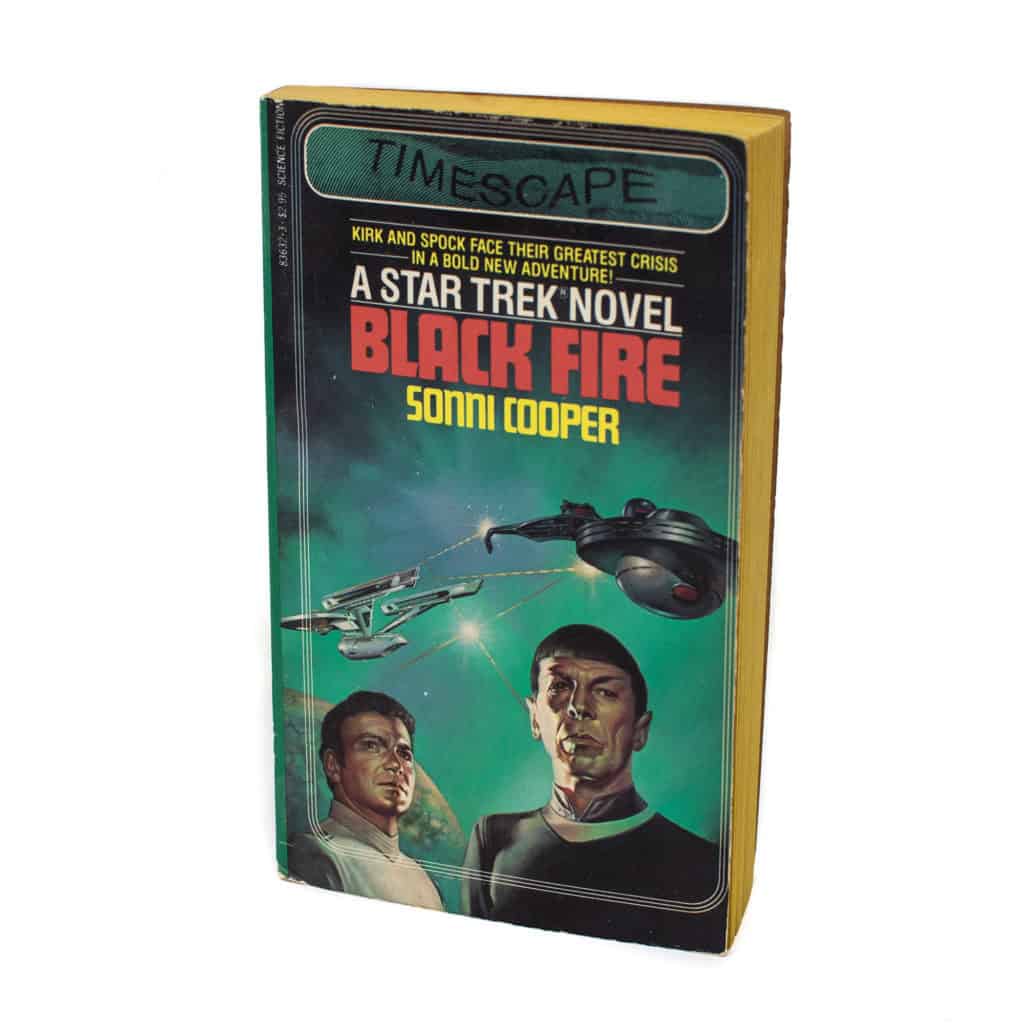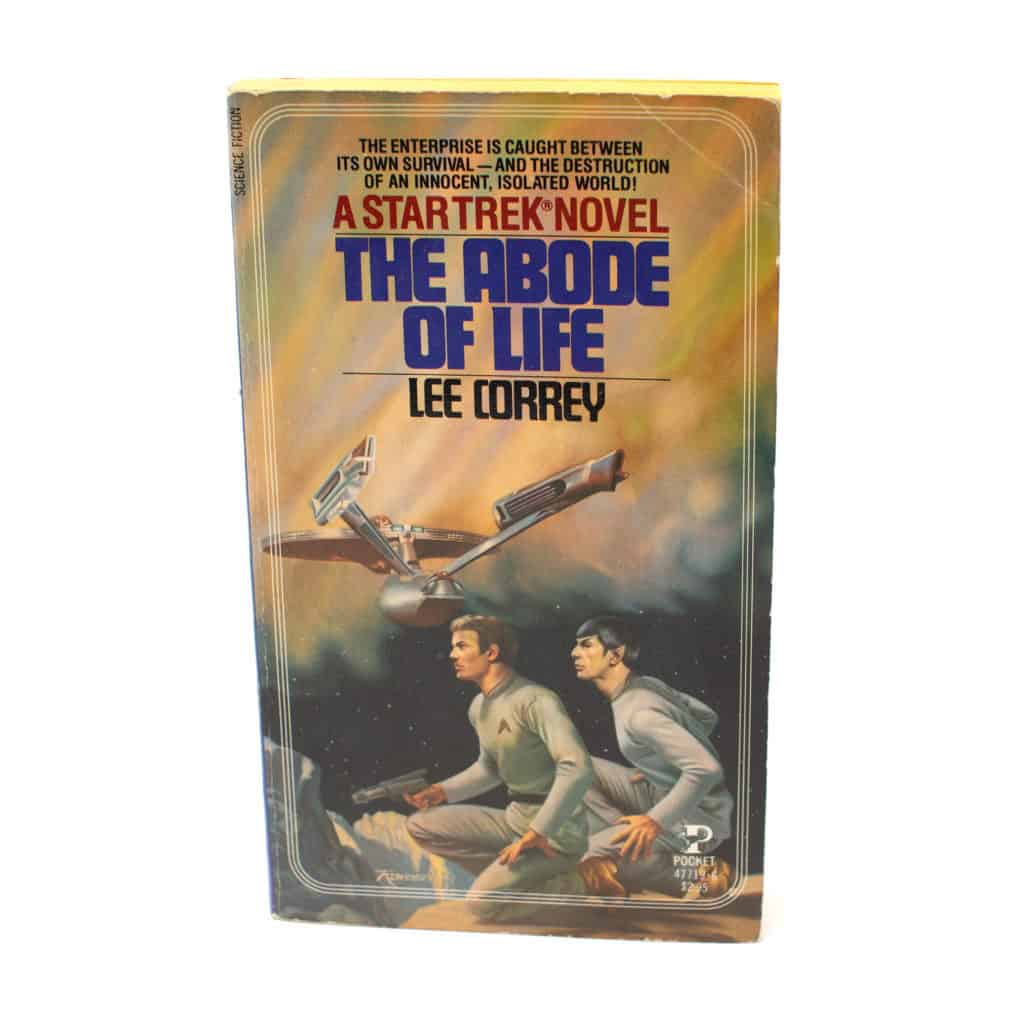
The USS Enterprise is crippled in orbit around a dangerous, living, breathing planet, and a desperate peace mission to the Orion Arm is stalled. Captain Kirk has never needed his crew more. But a lithe, alien woman is casting a spell of pacifism – and now mutiny – over the crew.
Suddenly Kirk’s journey for peace has turned into a terrifying war – to retake command of his ship!
Tell me if you’ve heard this one before: a mysterious person boards the Enterprise and soon, things start going haywire and the mission they’ve embarked on is in jeopardy.
This time, it’s different because there’s a girl, though! And Kirk doesn’t try to sleep with her!
Whoa whoa whoa you’re just going to start up and not mention that it’s been six damn months since you’ve updated this site?
Yup. Deal with it. 2020-2021 was wild, my friend. Plus, we’re going to have another gap because we are moving across the country soon.
Good for you. Anyway, is that Robert Vardman’s name I see? He of The Klingon Gambit, a book you lambasted?
It is! But he does a much better job this go-round. The in-universe stuff is handled with a bit more care and he actually works to make the characters seem like the ones on the show. Nobody is going to mistake Vardman for Vonnegut, but the tone in this book is less militaristic, much more human. Like I mentioned in the outset, a plot that seems more evocative of classic TOS episodes instead of setting up a military debacle from the jump.
Can you give me the plot in less than 200 words? Bullet points are acceptable.
An exhausted Enterprise is turned away from shore leave and refit at Starbase One in order to transport a Tellarite ambassador and his aides to some delicate Romulan-adjacent negotiations way the hell out there to Ammdon and Jurnamoria, two planets that hate each others’ guts.. They encounter a disabled ship with a single woman on-board, Lorelei,1I’ll get to that, I swear. a Speaker from the planet Hyla.2A place nobody’s heard of. The pacifist alien discovers that they’re heading to a region of space on the edge of war and urges Kirk and crew to turn back, insisting that their presence will only exacerbate the situation. On top of everything else, Scotty’s beloved engines are on the verge of failure.
They soon discover that Lorelei’s title is not just an appellation: she uses some unknown ability to persuade others to join her cause and she starts to turn the crew against Kirk and the ambassadorial team’s mission. While the crew deserts their stations and stands around in corridors muttering about our beloved captain’s lust for combat, the warp engines give up the ghost and they find themselves stranded near a strange planet, one that may have the materials they need to fix the warp drive and finish their mission.
It’s not that easy, of course, and the last third of the book features the reveal that the world is actually one giant creature3Shades of Marvel’s Ego, the living planet., the horrific death of the ambassadorial team, Kirk taking back his ship, and a rushed finale in which Lorelei’s abilities are used to calm the situation down and start laying the groundwork for two new worlds to join the Federation.
You went over your assigned wordcount by at least 25%.
You can complain when you’re paying by the word, okay?
As I’ve mentioned twice now, this is a very classic Star Trek sort of setup, but with enough big weird sci-fi stuff that would be hard to capture on-screen in 1967 that it feels just a bit special. I always love it when the pugnacious, outspoken Tellarites make an appearance in Trek, and Zarv is a perfect thorn in the plot’s side. The inclusion of a plant-based sentient named Mek Jakkor as part of the ambassadorial team is a nice touch, too. There’s a human helping out, too, but you know, whatever. Throw in a big, weird alien world and some angry aliens and baby, you’ve got yourself a stew going.

Now, this isn’t to say the book is flawless — far from it, in fact.
Vardman’s got a misogynistic streak that shows up in a few places that I can’t help but being annoyed by. When the admiral in charge of Starbase One comes onto the view screen, Kirk muses to himself that she’d be pretty if she put a little more effort into it. Lorelei is described as being “attractive, but not pretty” in a few places, which is awkward at best and comes off a little judgemental. (She’s also described as wearing diaphanous clothing, something I’d complain about if I wasn’t intimately familiar with the work of William Ware Theiss.)
The book also suffers from being entirely from Kirk’s point of view. One of the things I like about my favorite Trek novels is that they allow you to get into the heads of multiple characters and offer deeper interactions with the universe. In a story with alien ambassadors, a woman with a passion for peace, and a chief engineer struggling to keep his ship together, it would seem logical to deviate from the limited third person style that Vardman chooses to go with here.
When I wrote about The Klingon Gambit, I mentioned that Scotty had a new, attractive chief assistant helping him out in the engine room. She’s back. Heather McConel may not quite qualify as a Mary Sue, but there’s something about her character4 Who gets called by her first name by everyone and who happens to run a still and who is also super-good at engineering and is also Scottish and okay maybe she is a Mary Sue of some kind. that grinds my gears.
Finally, there’s the fact that there’s an episode of Star Trek: The Animated Series called “The Lorelei Signal” in which a group of women dominate the minds of the men on board the Enterprise and take over the ship. The plots are different enough (and mind-whammies are common enough in Trek) that I’m not going to quibble over that, but naming the lead character in this after the same mythical woman who lured sailors to their death is just lazy. This is the kind of thing that Pocket’s line editor David Hartwell should have caught, but as I’ve pointed out before, he didn’t seem to enjoy the more particular aspects of his job that much.
Anything else? You should probably get to work.
Yeesh, you’re right. Anyway, two more quick things!
In Ayers’ Voyages Of Imagination: The Star Trek Fiction Companion5Nobody mention that it’s all fiction, okay?, Vardman recalls: “The genesis from the plot of Mutiny on the Enterprise harkened back to one of my favorite Heinlein books, Starman Jones. The idea of an entire planet being one interlocked intelligence appealed greatly (score one for Heinlein — his idea came long before the conceptualization of Gaia). I tossed in a few other elements to add menace to an orbiting Enterprise and was satisfied with the result.”
Of some interest (and perhaps some relevance as to this book’s relative quality over his first): Vardman had switched agents between The Klingon Gambit and Mutiny On The Enterprise but Hartwell worked with his original representative on his second Trek novel.
Overall, I’d say this is a fine Trek novel. Good if you’re going to burn through it in an afternoon or two, but not worth reading a chapter a night for two weeks and taking obsessive notes over just for a 1200-word blog post.














